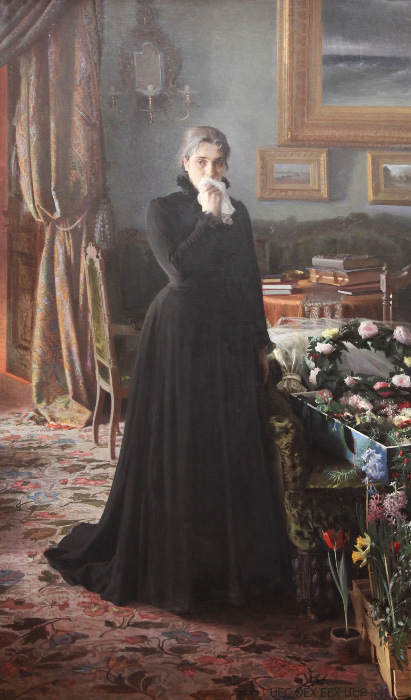 |
|
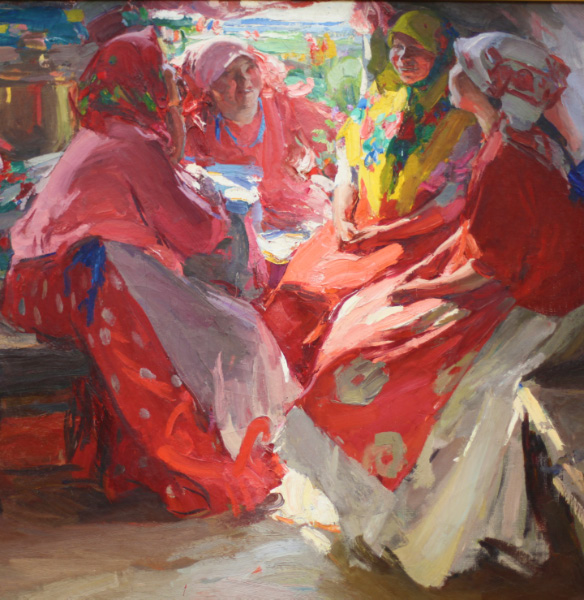 |
| Неутешное Горе – Inconsolable Grief |
|
|
| |
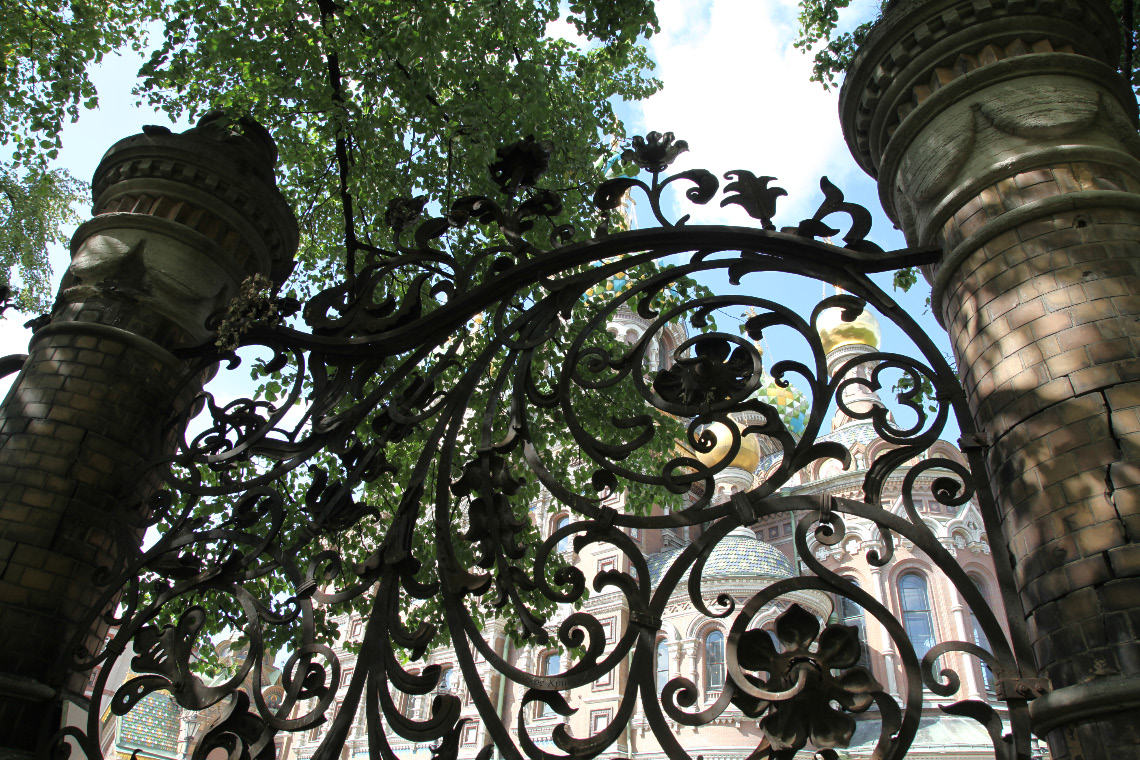 |
|
| |
At the west end of the Mikhailovsky Gardens – Михайловский Сад in Saint Petersburg and concealing the Церковь Спаса на Крови – Church of the Savior on Spilled Blood |
|
| |
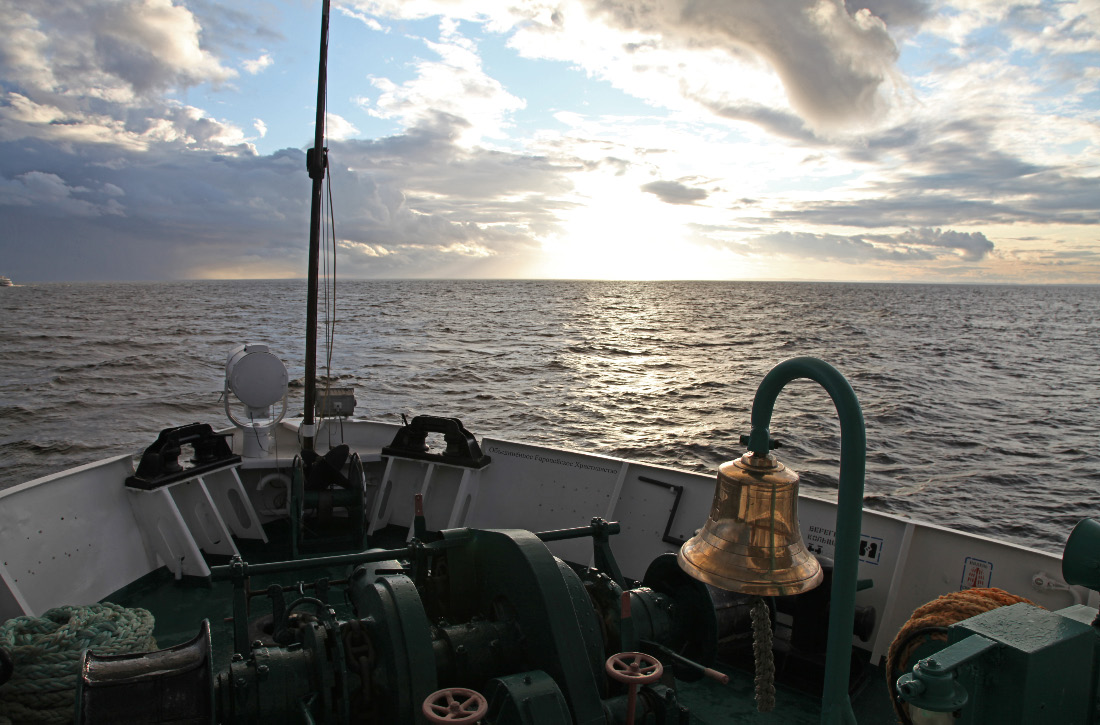 |
|
| |
Ладожское Озеро, Sweet not Salt, Europa's biggest lake, Ladoga – Ладога |
|
| |
|
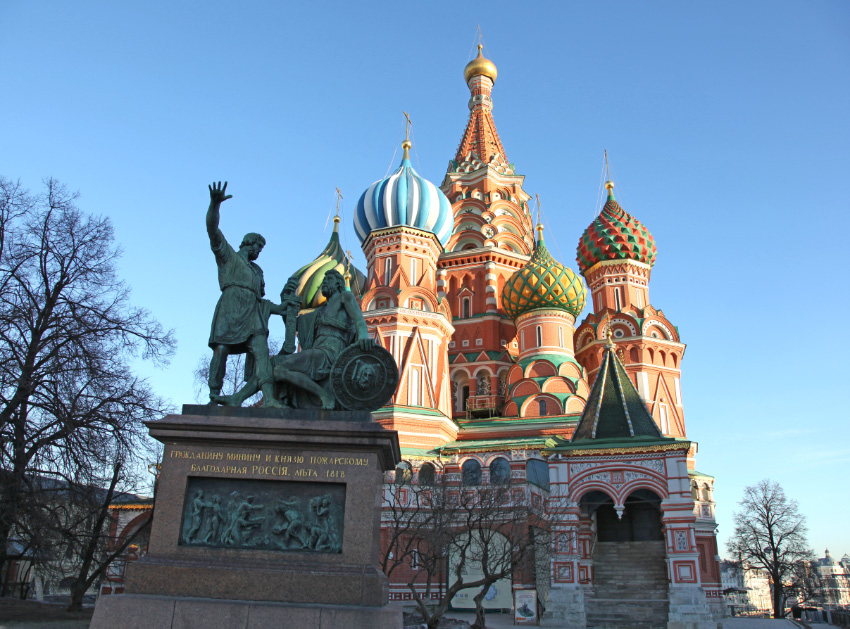 |
| |
|
|
| |
Подразумевается, что список стран, чьи территории и население являются частью Объединённого Европейского Христианства - ОЕХ, будет основываться на фактах, а не на критических домыслах. В списке представлены территории, которые на самом деле являются частью Объединённого Европейского Христианства, а вовсе не те, которым предположительно следует там находиться. Речь не идет о временном или пространственном совпадении с Церковью. Церковь универсальна и вечна. Объединённое Европейское Християнство может занимать 48 % земной поверхности нашей планеты, может насчитывать около 1,200,000,000 населения, которое произвело ВВП в размере 40,238,403,000,000 $ в 2012 г. за 12 месяцев (это около 56 % всего мирового производства), может просуществовать как цивилизация в течение 50,000 лет или еще меньше. Но при всем при этом Объединённому Европейскому Христианству не быть ни универсальным, ни вечным. В Милости Божьей Европейское Христианство не сравнится с Христианством в целом. Многие люди, которые не принадлежат к Европейскому Христианству, являются христианами и, возможно, гораздо лучшими и приближенными к Богу, нежели их европейские братья по вере.
В странах, которые вошли в список:
1. Исторически преобладающим большинством были европейцы и христиане по крещению, убеждениям и самоидентификации.
2. На сегодняшний день преобладающим большинством являются потомки Европейского Христианства.
Много уже сказано и еще будет сказано и написано по поводу концептуальных идей в предыдущем предложении. Некоторые аспекты полемики и взгляды на проблему изнутри также будут включены в фильм «Объединённое Европейское Христианство», но, прежде всего, этот фильм повествует о воссоединении Церкви. |
|
| |
|
|
| |
Господь Крѣпость Людемъ Своимъ Дястъ – Господь Блягословитъ Люди Своѧ Миромъ
Lord Fortress of Your People – Lord Bless us with Your Peace
Слава въ Вышнихъ Богу
Glory to God in the Highest |
|
| |
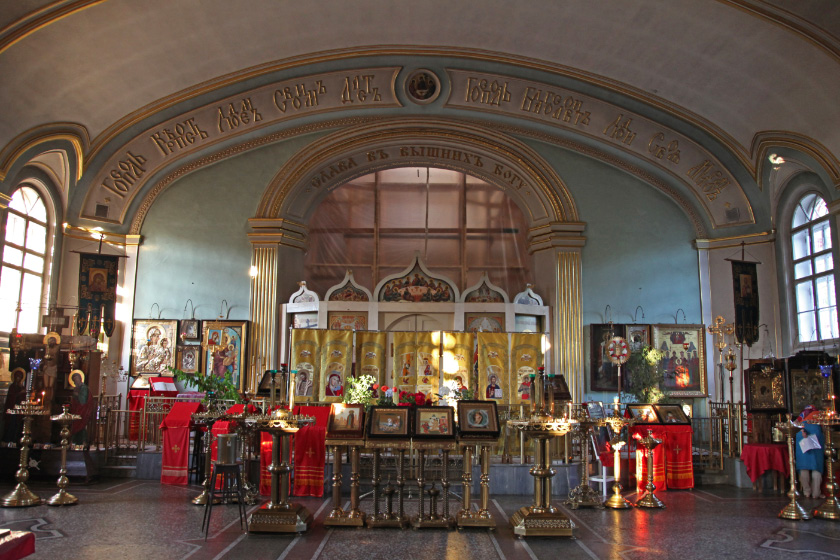 |
|
| |
в Пскове – in Pskov |
|
| |
|
|
| |
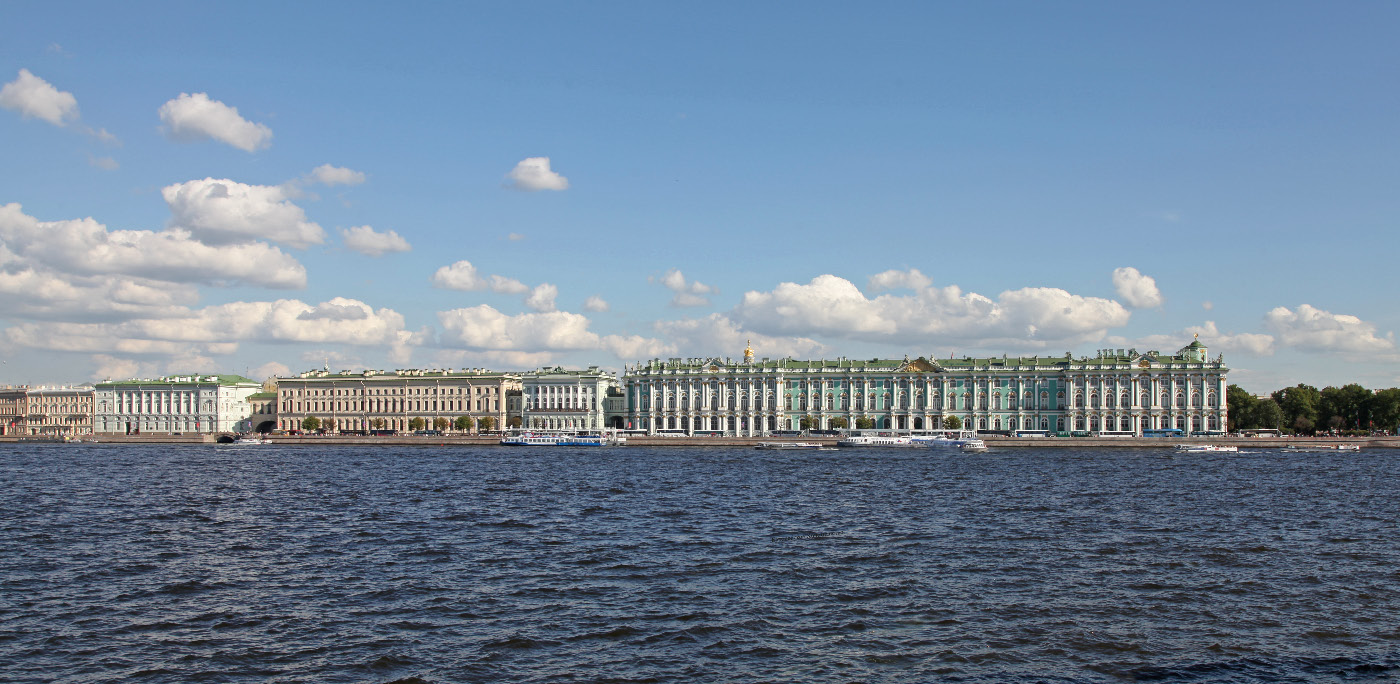 |
|
| |
On Дворцовая Набережная – Palace Embankment: Эрмитажный Театр – Hermitage Theater > Старый Эрмитаж – Old Hermitage > Small Hermitage – Малый Эрмитаж > Зимний Дворец – The Winter Palace |
|
| |
|
Архитекторы – Architects: |
Giacomo Antonio Domenico Quarenghi
– Джакомо Антонио Доменико Кваренги
(an Italian Catholic * 1744
in Rota d'Imagna near Milano) |
|
|
|
|
| |
|
|
|
Georg Friedrich Veldten
– Юрий Матвеевич Фельтен
(of a Lutheran-German family;
studied architecture in
Catholic-German Tübingen) |
|
|
|
| |
|
|
|
|
Jean-Baptiste-Michel Vallin de La Mothe
– Жан-Батист-Мишель Валлен-Деламот
(* in 1729 in very Catholic
Angoulême, France) |
|
|
| |
|
|
|
|
|
Francesco Bartolomeo Rastrelli
– Франческо БартоломеоРастрелли
(an Italian Catholic born in Paris * 1700
Париж, Франция) |
|
| |
|
|
Бедные, бедные Славянофилы! poor, poor Slavophiles! |
|
|
|
| |
|
|
...though perhaps little more silly and inaccurate than the banner of Западник –Westernizer, used by and to describe the then contrasting camp. Still one should note that even the term Slavophile has always been ridiculous. As if the Poles, Slovaks, Slovenes, Czechs, Croates, Montenegrins, Bulgarians and Macedonians share in the absurd sentiment and distortion! |
|
|
|
| |
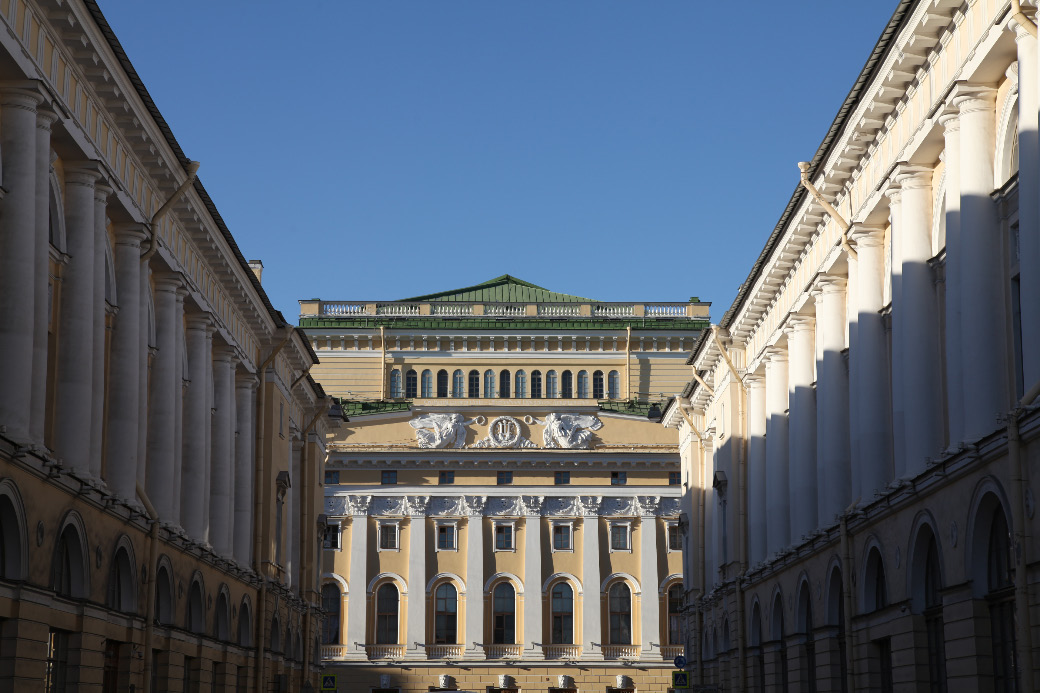 |
|
| |
Looking down the last hundred meters or so of улица Зодчего Росси – Architect Rossi Street (width of street and height of buildings left and right, 22 meters; length of street 220 meters) toward the Александринский театр – Alexandrinsky Theater (built 1828-1832, and named for the Empress-consort of Tsar-Emperor Nicholas I). The building at the viewer's right, 2 Улица Зодчего Росси, houses the Академия русского балета им. Агриппина Я. Вагановой Vaganova Academy of Russian Ballet, formerly the Танцовальная Ея Императорского Величества школа – Imperial Ballet School, established in 1738. The Neoclassic architectural ensemble is the work of Carlo Domenico Rossi – Карл Иванович Росси (an Italian Catholic born 18 December 1775 in Napoli). Nicholas I let him die in poverty in 1849. |
|
| |
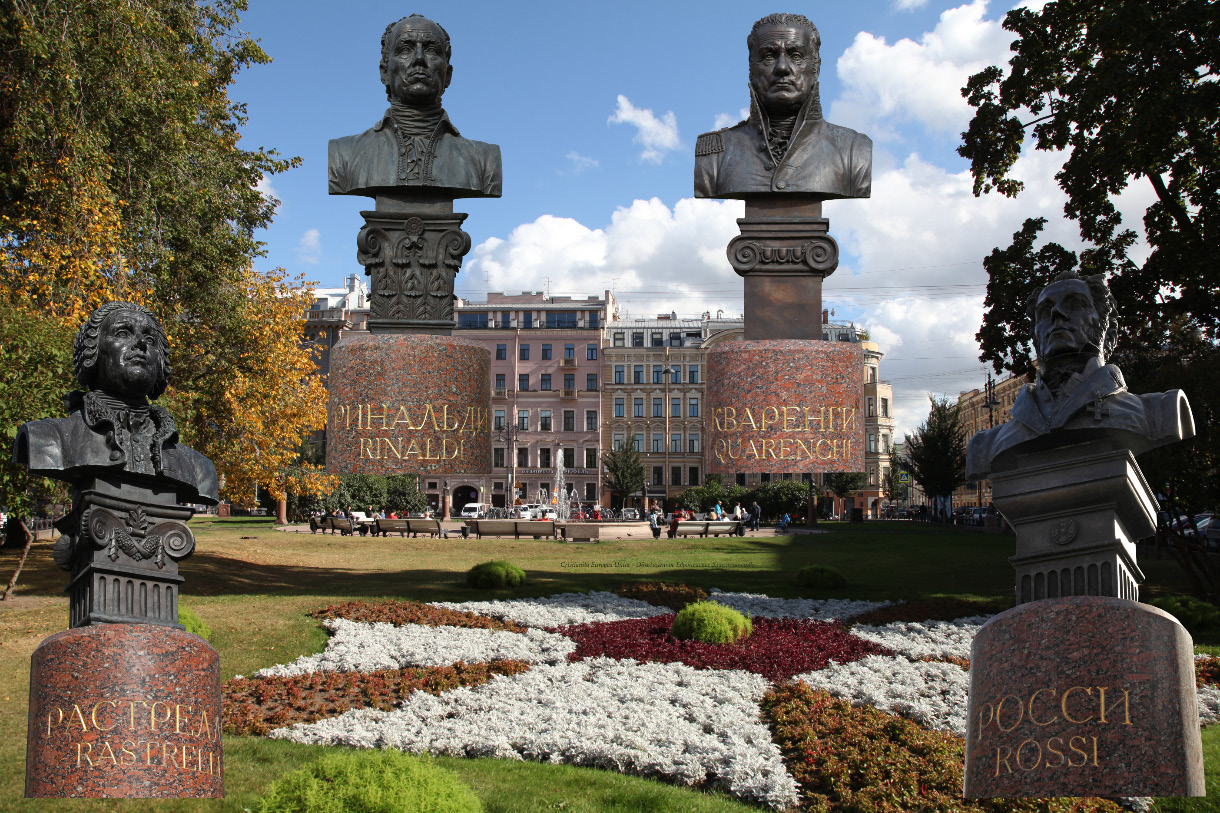 |
|
| |
The Italian Catholic architects who built Saint Petersburg: Rastrelli and Rinaldi and Quarenghi and Rossi |
|
|
|
|
| |
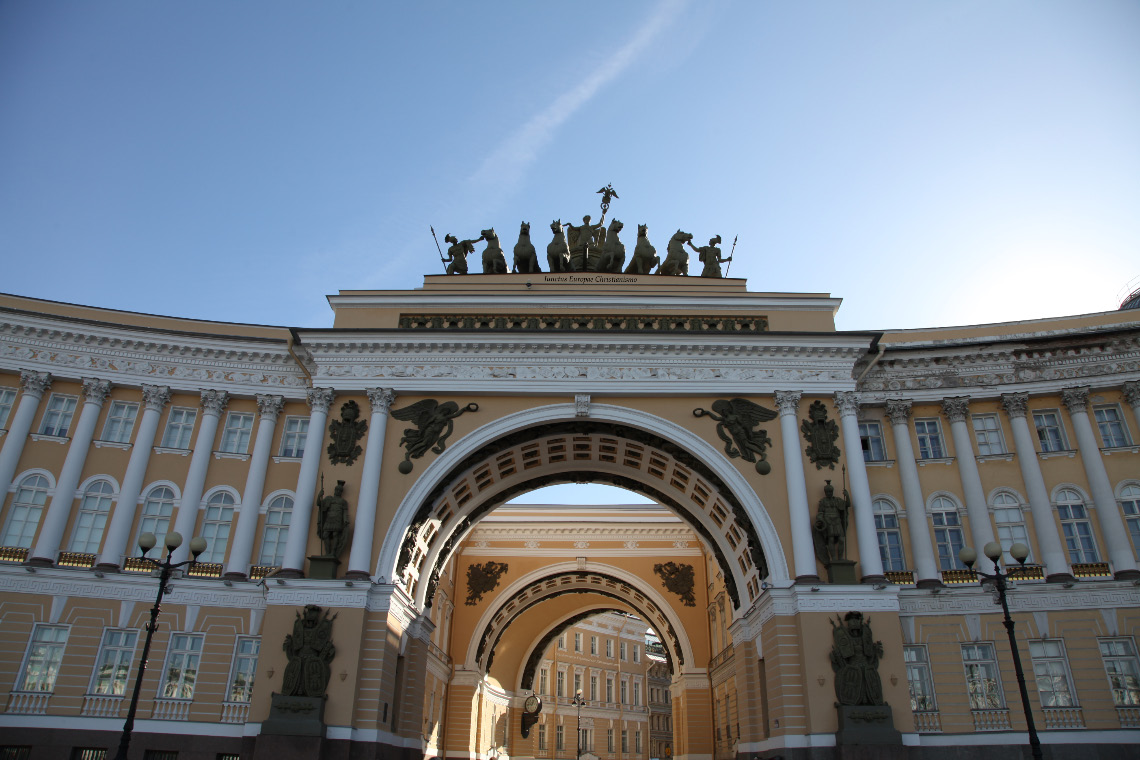 |
|
| |
Detail, centurion armor, from the 580 meter bow-shaped General Staff Building – Здание Главного штаба (built 1819-1829 under the direction of Italian Catholic architect Rossi) on Дворцовая площадь – Palace Square, opposite the Зимний Дворец – The Winter Palace. |
|
|
Спас на Крови |
|
| |
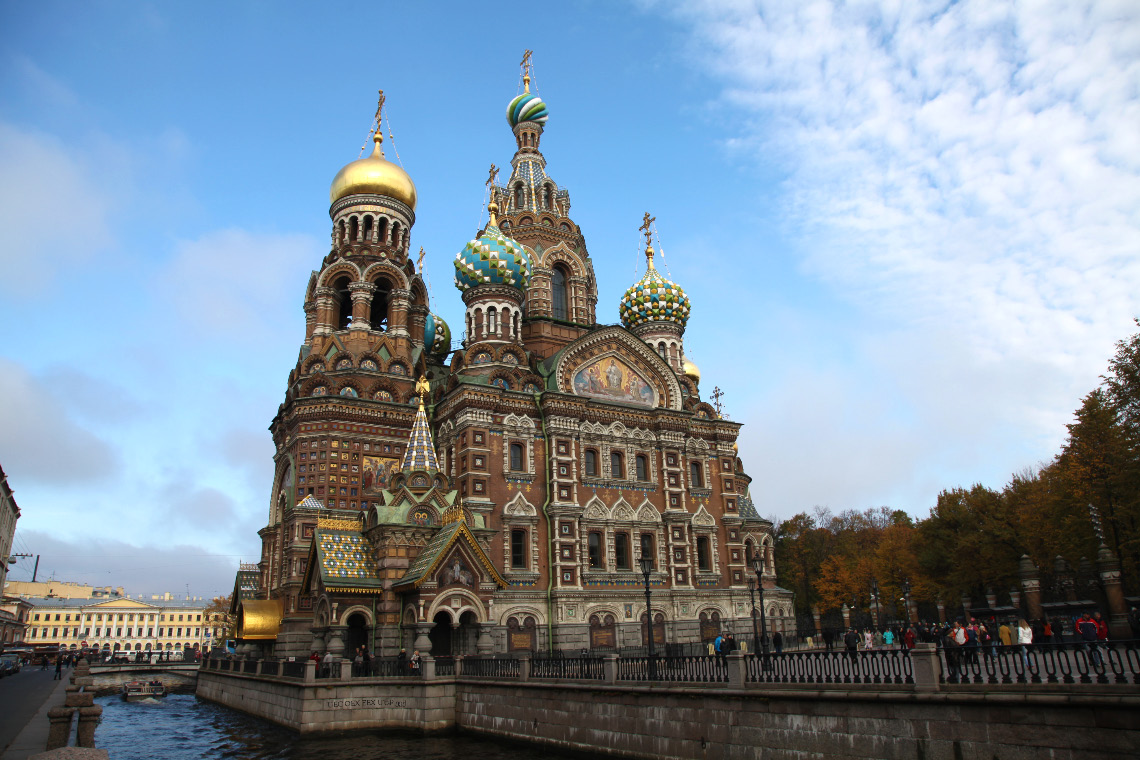 |
|
| |
Собор Воскресения Христова на Крови – Church of the Resurrection of the Savior on Spilled Blood |
|
| |
Consecrated on 19 August 1907 after twenty-four years of construction begun in 1883, the Church building will remind all onlookers at once of the 350-years older Собор Василия Блаженного – Saint Basil's Cathedral in Moscow. The lead architect, Alfred A. Parland – Альфред А. Парланд (1842 – 1919), was Russian born, the son of the son of Emperor Paul's Scottish Engish-language tudor, as also the son of a German mother. |
|
| |
Александр II Николаевич, Император и Самодержец Всероссийский – Alexander II Nikolaevich, Emperor and Autocrat of all the Russias |
|
| |
was murdered here on 1 (13 N.S.) March 1881, an event which marked a change in history for Russia. When one considers the Bolshevik victory which followed thirty-six years later, the assassination of the Освободитель, of the Tsar-Liberator, liberator of Russia's peasant farmers from Serfdom, must be seen as a watershed event for the world. |
|
| |
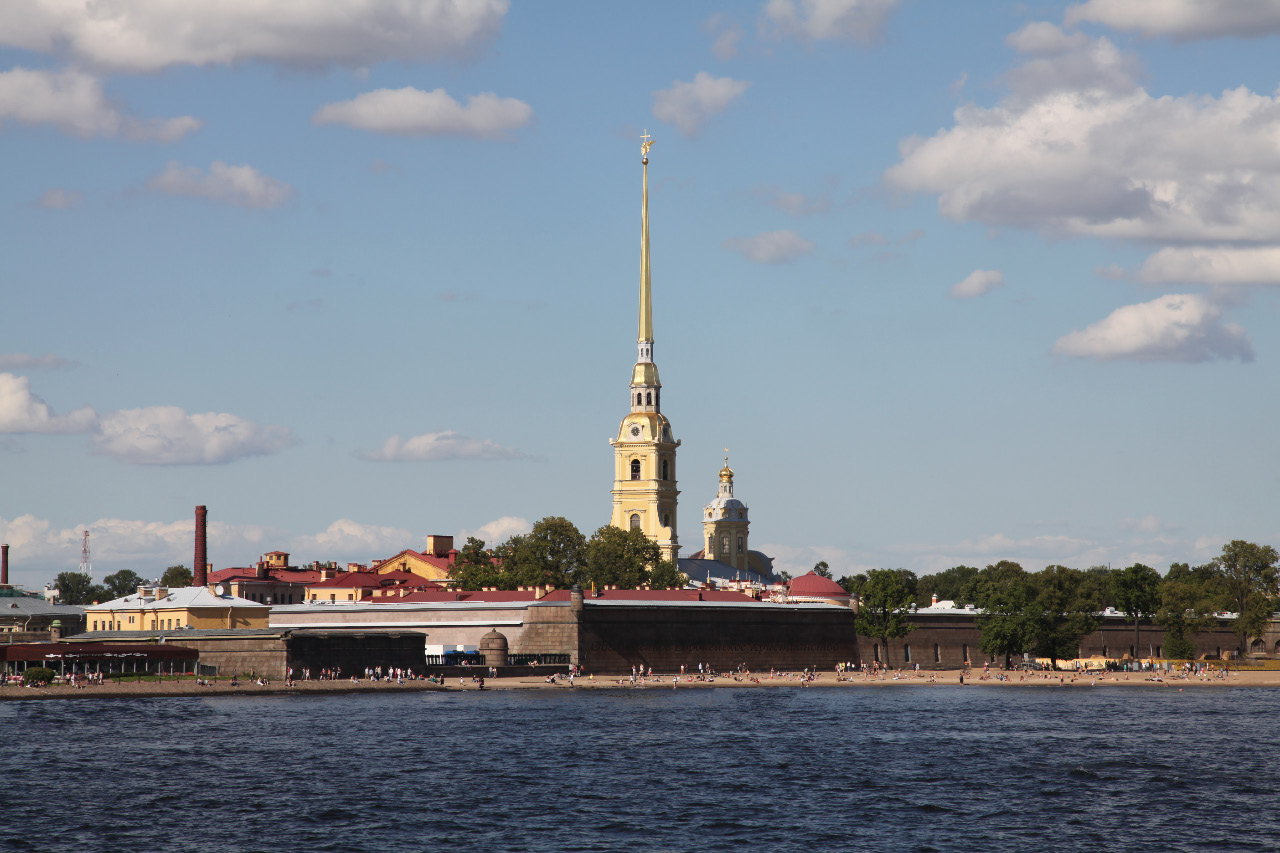 |
|
| |
Петропавловский собор – Peter and Paul Cathedral withn the Peter and Paul Fortress – Петропавловская крепость, the first citadel and oldest part of Saint Petersburg. The Church is very obviously of western European architectural form, as indeed Church and Fortress are to the designs of Italian-Swiss Catholic (from Astano near Lugano), Domenico Trezzini (c. 1670 – 1734). The style he founded became known as Petrine Baroque. The Cathedral and the Citadel protecting her and Peter the Great's new city were begun in 1703, more specifically on 29 June (10 July N.S.), the Feast Day of Saints Peter and Paul. The Cathedral was largely finished in 1720, though not entirely until 1733 and after the 1725 demise of Peter. She reaches a height of 122.5 meters, though this is due to the spire of Harman van Bolos – Харман ван Болос (1689-1764), Dutch not Italian. The angel and cross at the pinnacle, 3.2 meters high and 250 kilograms, are a symbol of Saint Petersburg. |
|
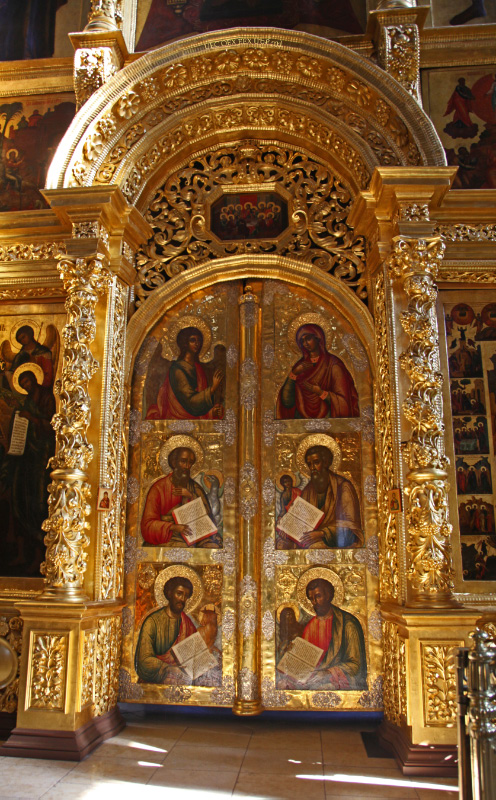 |
|
|
Царские Врата - Royal Doors in the Dormition/Assumption Cathedral - Успенский Собор,
Свято-Троицкая Сергиева Лавра в Сергиевом Посаде — Holy Trinity Saint Sergius Lavra. |
|
|
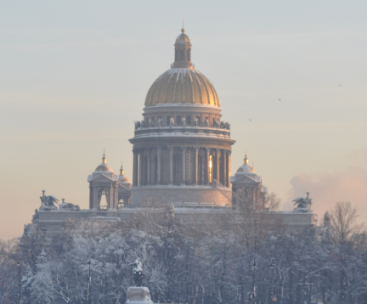
|
|
|
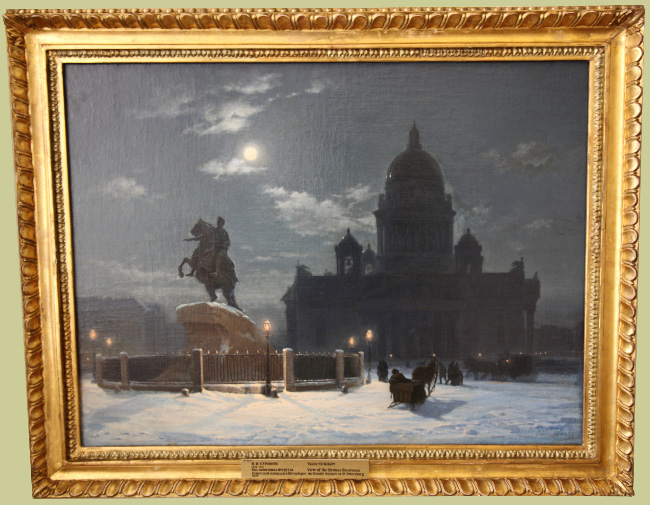
|
| |
|
|
Медный Всадник, картина Василия Ивановича Сурикова -
The Bronze Horseman, painting by Vasily Ivanovich Surikov |
| |
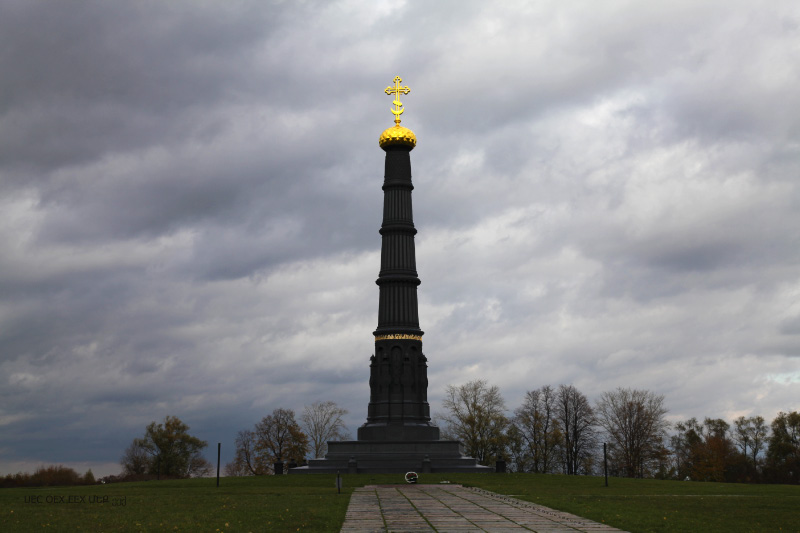 |
|
| |
Памятник на Куликовом Поле по проекту А. П. Брюллова, 1848. |
|
| |
|
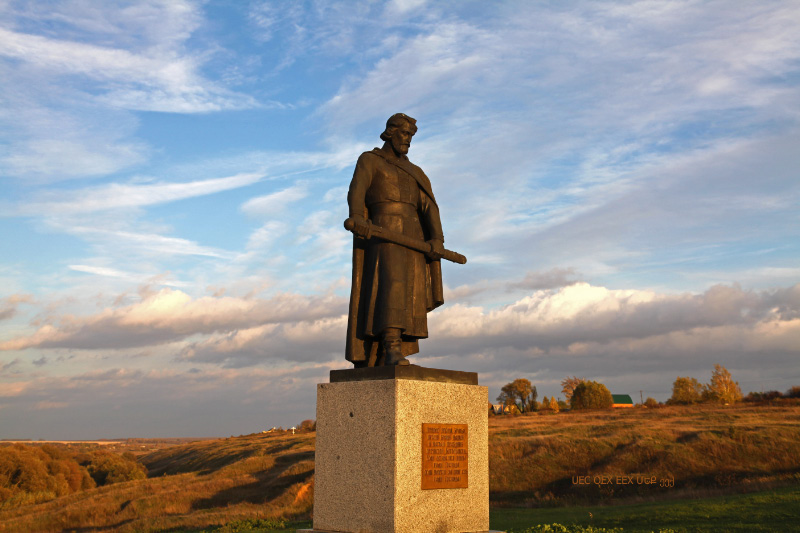 |
| |
|
Monument to Дмитрий Донской – Saint Dimitri Donskoi (* 12 October 1350 – 19 May 1389 †) at Kulikovo Pole |
|
|
|
|
|
|
| |
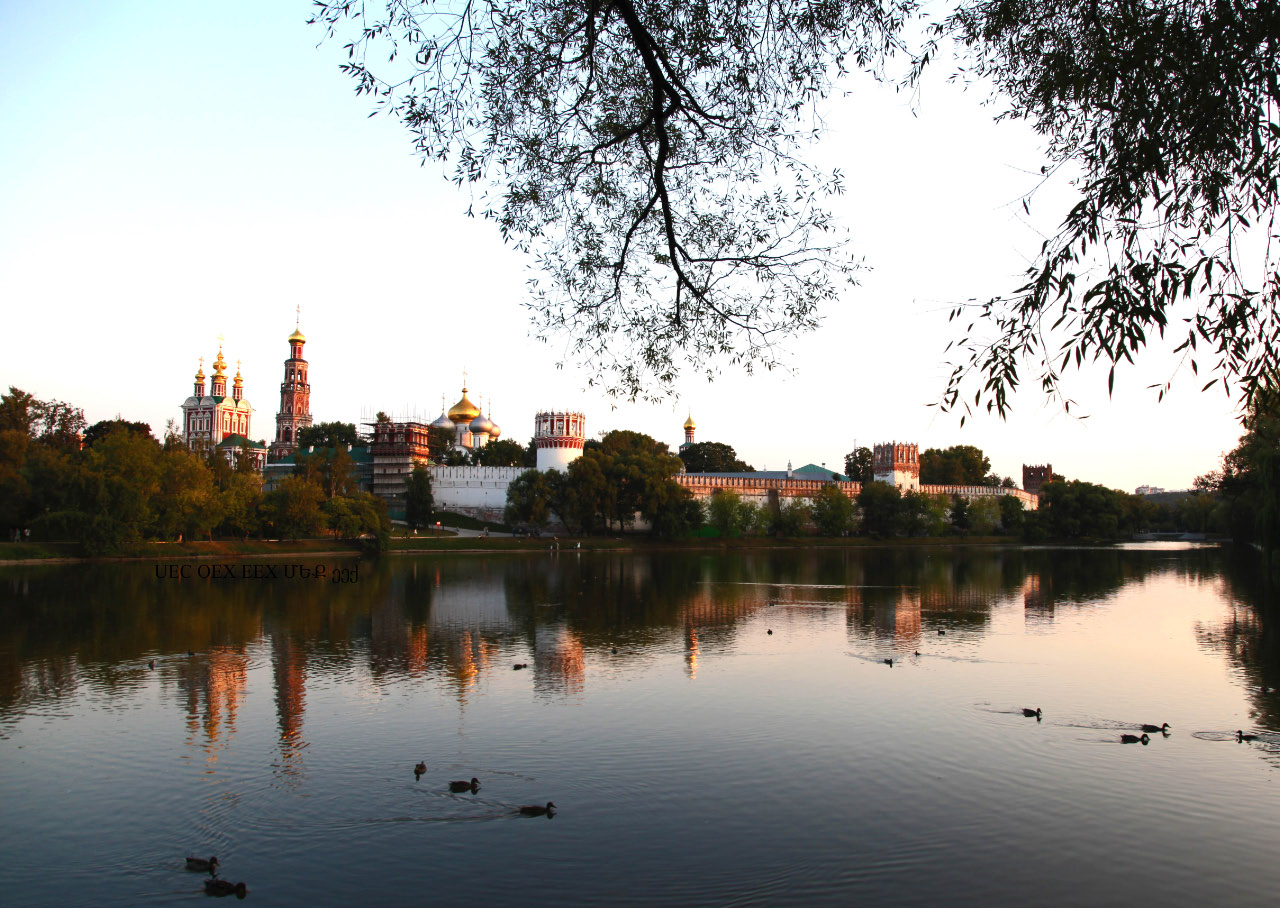
|
|
| |
|
Новодевичий Богородице-Смоленский монастырь
Novodevichy Convent Bogoroditse — Smolensky Monastery, founded in 1524 by Grand Prince Vasili III of Moscow in commemoration of the Conquest of Smolensk in 1514.
And as a curious note, the Siege of Smolensk in 1514 was but a small part of that civil war of European Christendom, one of countless, called the Moscovite-Lithuanian Wars, and these began in 1492.
1492 was an especially busy year for Christendom. Columbus sailed the ocean blue in 1492, yes, but it was also the year in which the Reconquista was crowned with its final success, if such matters can ever be said to be final. With the fall of the Islamic state of Granada on 2 January 1492, the Muslim invasion of the Iberian Peninsula 781 years earlier, in 711, was brought to an end. Of course in recent decades the political leadership of the European Union and Spain in particular is struggling mightily to reverse the Muslim reverses, allowing and encouraging mass immigration of everybody other than the Descendants of European Christendom into European Christendom, with Muslims granted special places of honor in these processes, Muslims and Jews. And this latter reminds one of another watershed event of 1492, the Edict of Expulsion, the Alhambra Decree of the Catholic Monarchs of Spain Isabella I of Castile and Ferdinand II of Aragon of 31 March 1492 ordering the expulsion of Jews by 31 July 1492. This decree was not formally revoked until 1968, under the influence of the Second Vatican Council, and now in the year 2014 Spain wants to encourage and honor and recompense Jews by offering them citizenship of Spain (allowing them to retain also their present citizenship) if only they satisfy absurdly conceived criteria of proof of decent via surname, language or other evidence. In other words, the offer is open to any Jew, so any Jew can now have European Union citizenship and unlimited access and right of movement and permanent residency and work permission and all the rest, rights denied to Canadian, Argentinian, American, Australian, Ukrainian and of course Russian Christians who are the Descendants of European Christendom and the rightful members and owners of European Christendom. Perhaps Spain's Justice Minister, Alberto Ruiz-Gallardón, rather than making himself an archenemy of European Christendom and his own country Spain, should rather have directed his talents, if any, to solving Spain's problems of a 25.1% unemployment rate (April 2014) and much more cataclysmic still a 1.36 births per woman fertility rate (circa 2.1 births per woman is replacement), joint gifts to European Christendom of the Second Vatican Council and the enormously increased prominence and influence of the atheist Jews 1968 (or rather 1964/5) to the present.
All of this seems far reaching enough, certainly, but elsewhere in the continental European part of European Christendom 1492 became a monumentous year for poisonous reasons. The papacy of an extraordinarily pernicious pontiff, perhaps the worst in history — to date anyway — began in that very year. On 11 August 1492 Roderic Llançol i de Borja (Rodrigo or Roderic Borgia), born at Xativa, near Valencia, in Spain on 1 January 1431, and a Cardinal-Deacon (pope elector) in the Catholic Church from the age of twenty-five, was elevated to the Throne of the Fisherman as Pope Alexander VI,"serving" in that highest of human offices for eleven years and a week until his death on 18 August 1503.
Returning to Moscow and to Novodevichy, elsewhere we will have a look at some of the ways that this special place has been honored by Christian disunity and infighting at the rise in prominence and power of those peoples who have chosen hostility to Christianity and to Christendom.
|
|
| |
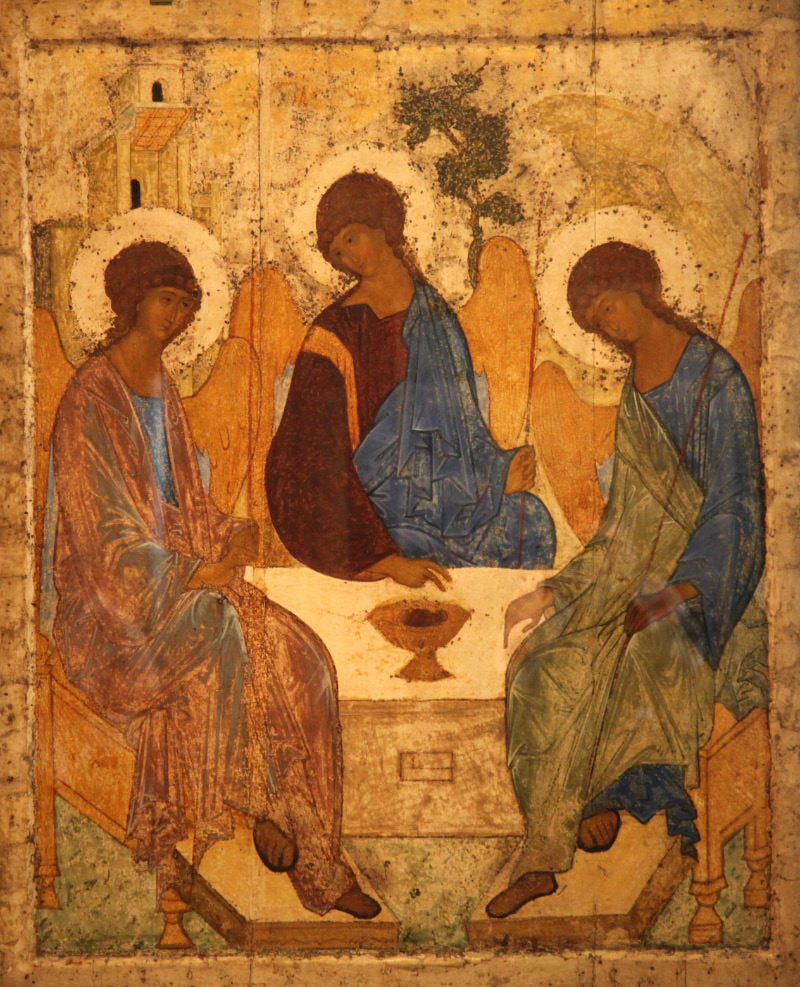 |
|
| |
Троица, 1411 год или 1425 - 1427 — Troitsa, icon written in 1411 or 1425 - 1427
Андрей Рублёв - Saint Andrei Rublyov (* c. 1360 - † 29 I 1430)
|
|
| |
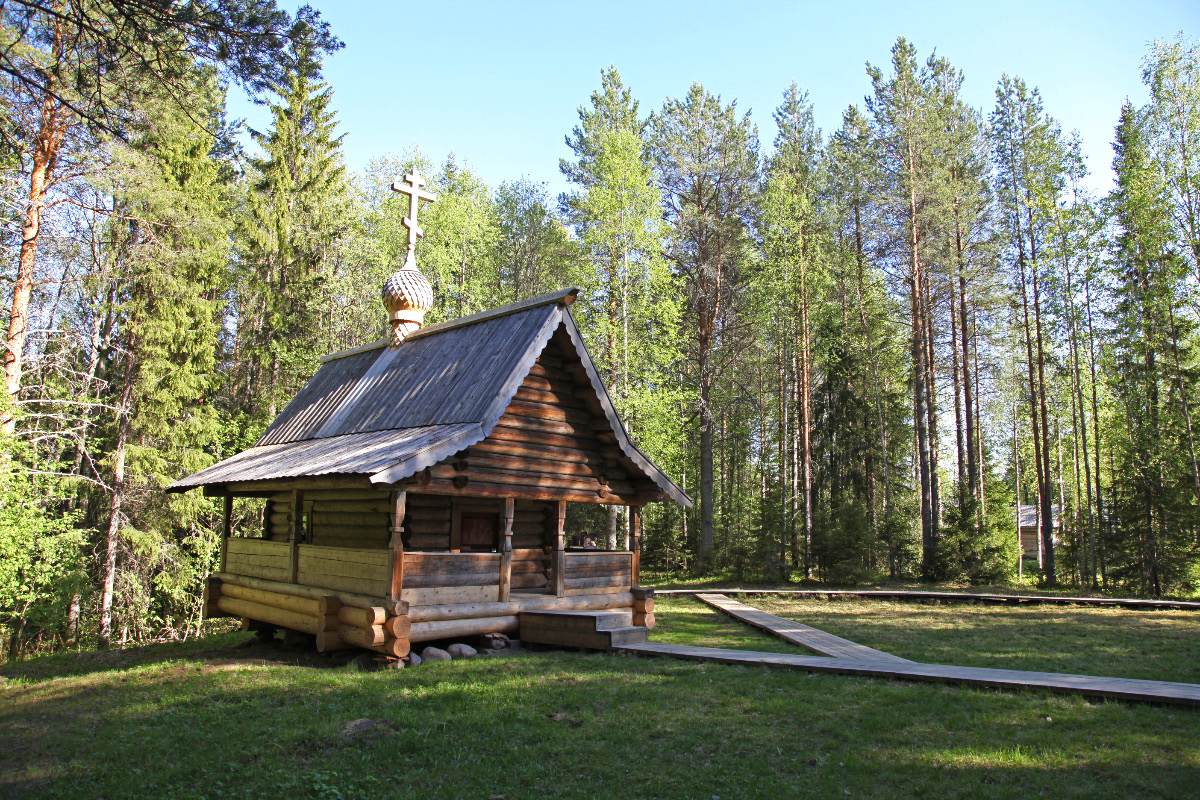 |
|
| |
Malie Koreli, Часовня во имя Св. Пропока Илии, Век XVIII – 18th century chapel (chasovnya) dedicated to Saint Elias. |
|
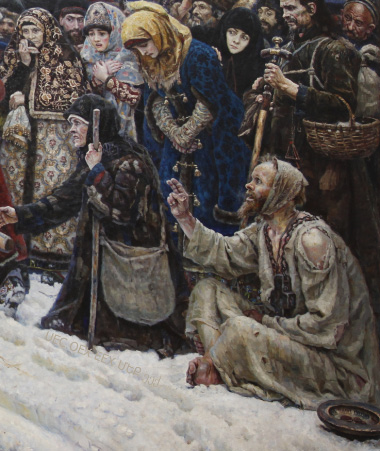
Юродство, detail from Boyarina Morozova by V.I. Surikov |
|
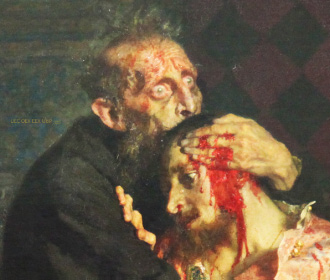
|
|
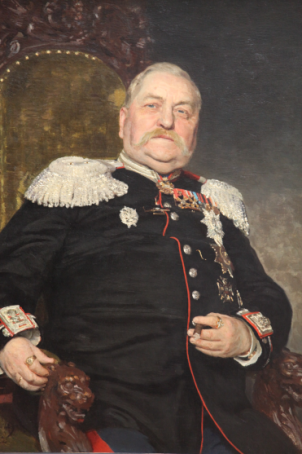
|
| |
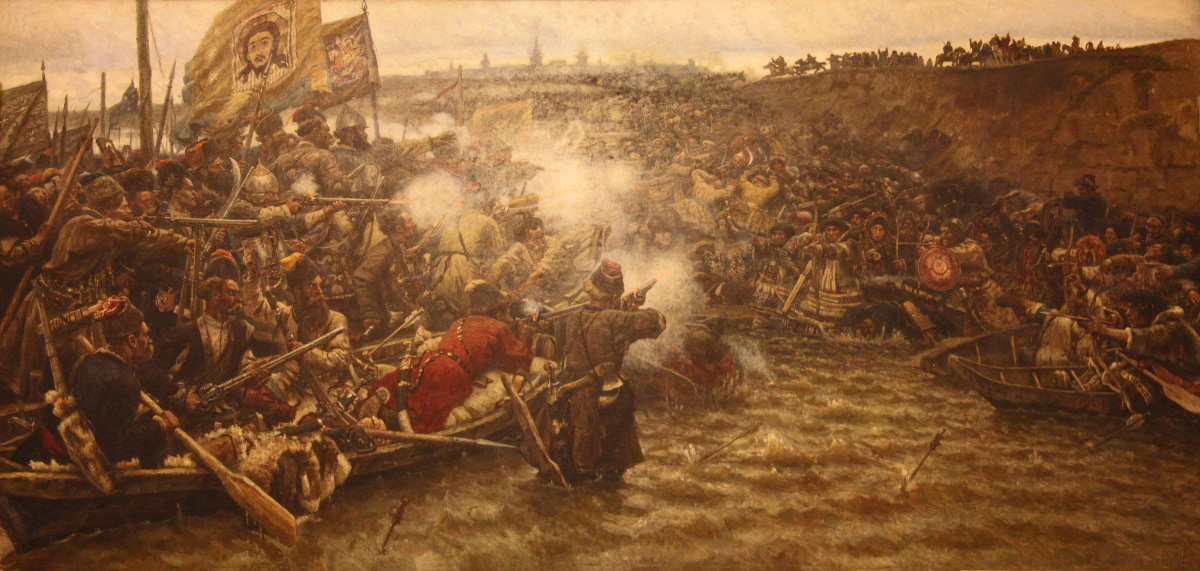 |
|
| |
Сибирь, еще Европейский христианский и России и православный христианин, в настоящее время.
Siberia, still European Christendom and Russia and Orthodox Christian, for now. |
|
| |
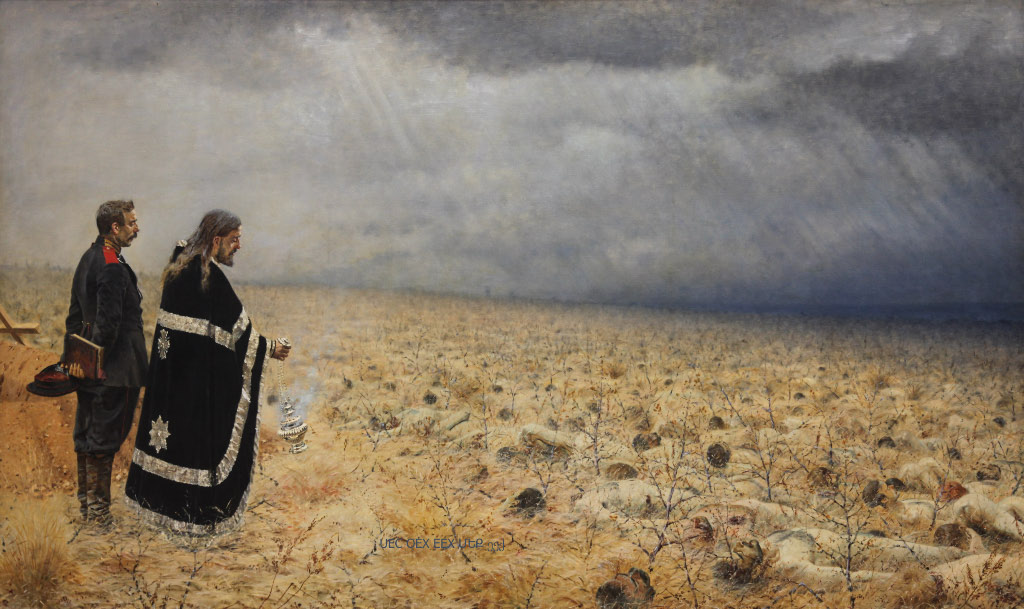 |
| |
|
The Vanquished. The Office for the Dead. V.V. Vereshchagin |
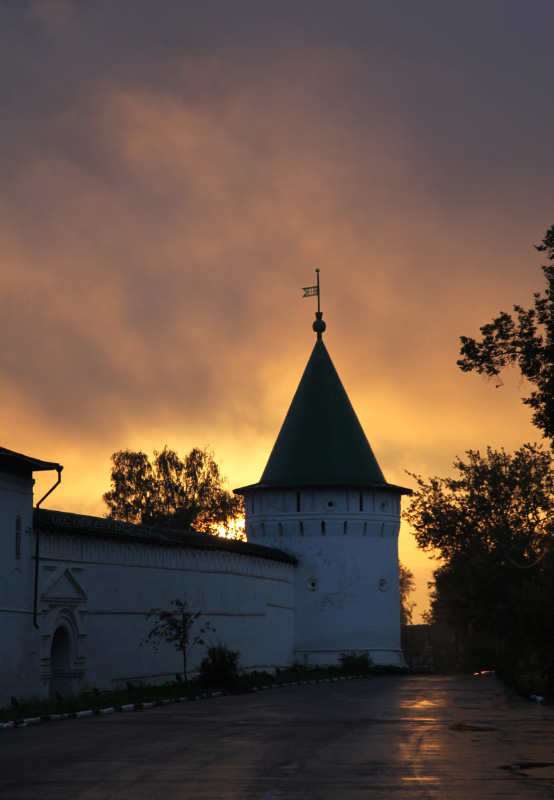 |
|
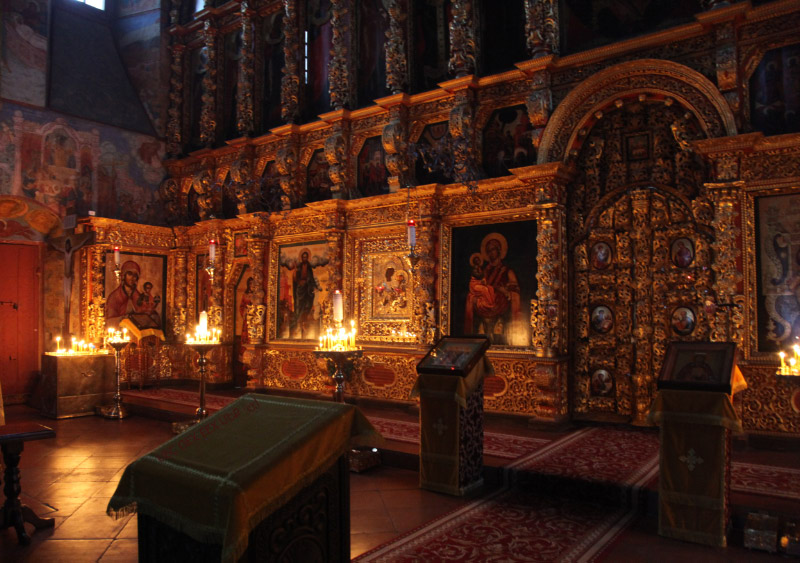 |
| |
Свято-Троицкий Ипатьевский монастырь в Костроме
Holy Trinity Ipatiev Monastery in Kostroma |
|
We knew not whether we were in heaven or on earth, for surely there is no such splendour or beauty anywhere upon earth. We cannot describe it to you, only this we know, that God dwells there among humans, and that their service surpasses the worship of all other places. For we cannot forget that beauty.
Мы знали, что не были ли мы на небе или на земле, для наверняка нет такого великолепия или красоту в любом месте на земле. Мы не можем описать его вам, только это мы знаем, что Бог пребывает там среди людей, и что их Превосходит сервис поклонение всех других местах. Ибо мы не можем забывать, что красота. |
|
| |
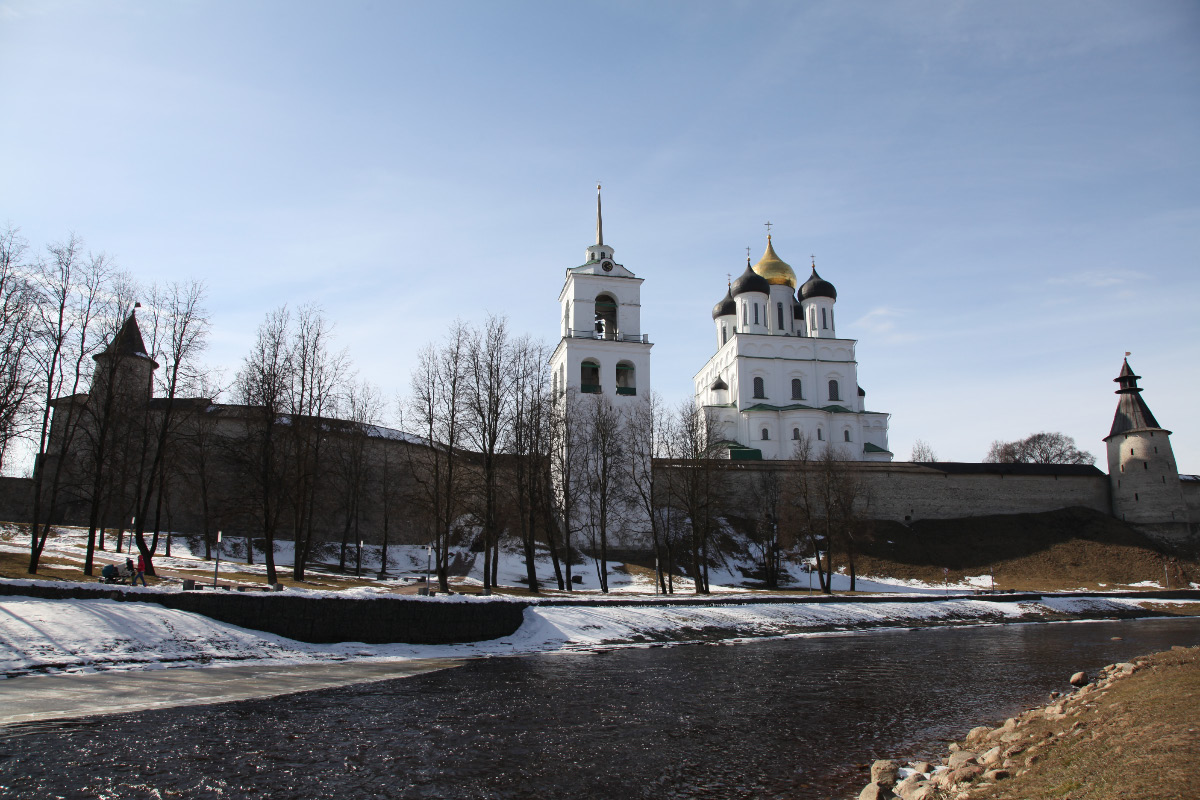 |
|
| |
In perhaps 300 meters the narrow Pskov River – Пскова Река will flow into the broader Great River – Vekikaya-Великая Река as she (or is it he, Old Man River) makes her way to her delta and to Lake Peipus Псковско-Чудское Озеро, only about 20 kilometers to the northwest from this point. Within the XV century walls of the Pskov Krom, or Kremlin – Псковский Кром - Кремль, stand the Trinity Cathedral – Троицкий Собор (consecrated in 1699) and the XIX century Bell Tower, framed here by two towers-башни. |
|
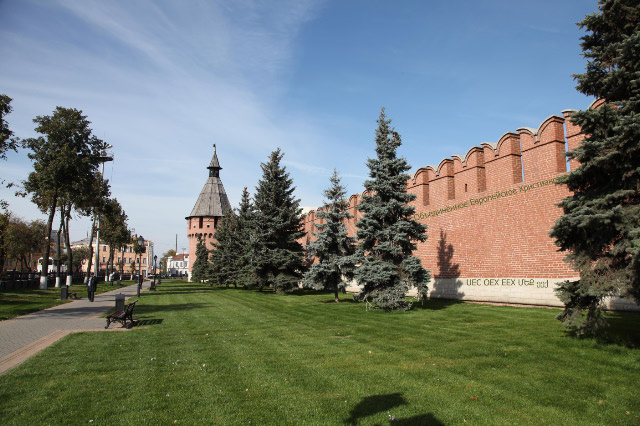 |
|
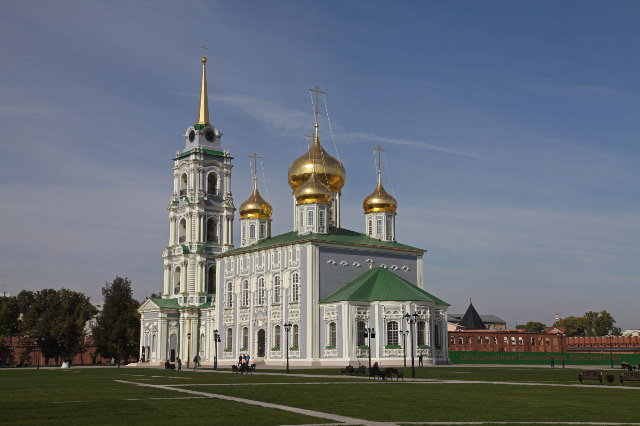 |
| |
|
Успенский Собор Тульского Кремля - Dormition Cathedral of the Tula Kremlin |
| |
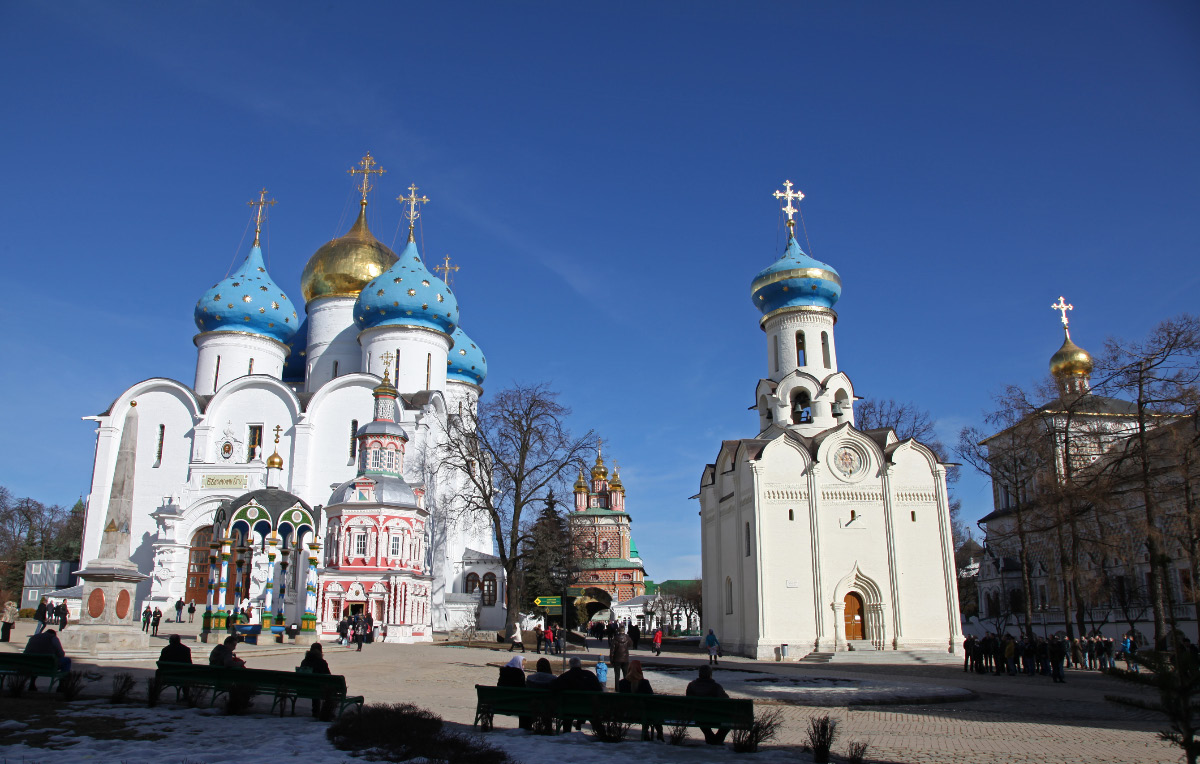 |
|
| |
Within the walls of Свято-Троицкая Сергиева Лавра в Сергиевом Посаде – the Holy Trinity Lavra of Saint Sergius in Sergiev Posad: Cathedral of the Assumption behind Assumption Fountain and Chapel, then moving to the viewer's right in the distance the Gate Church of Saint John the Baptist, then further right the Church in honor of the Descent of the Holy Spirit and finally at the southern, rightmost, the Refectory Hall and Church of Saint Sergius. |
|
| |
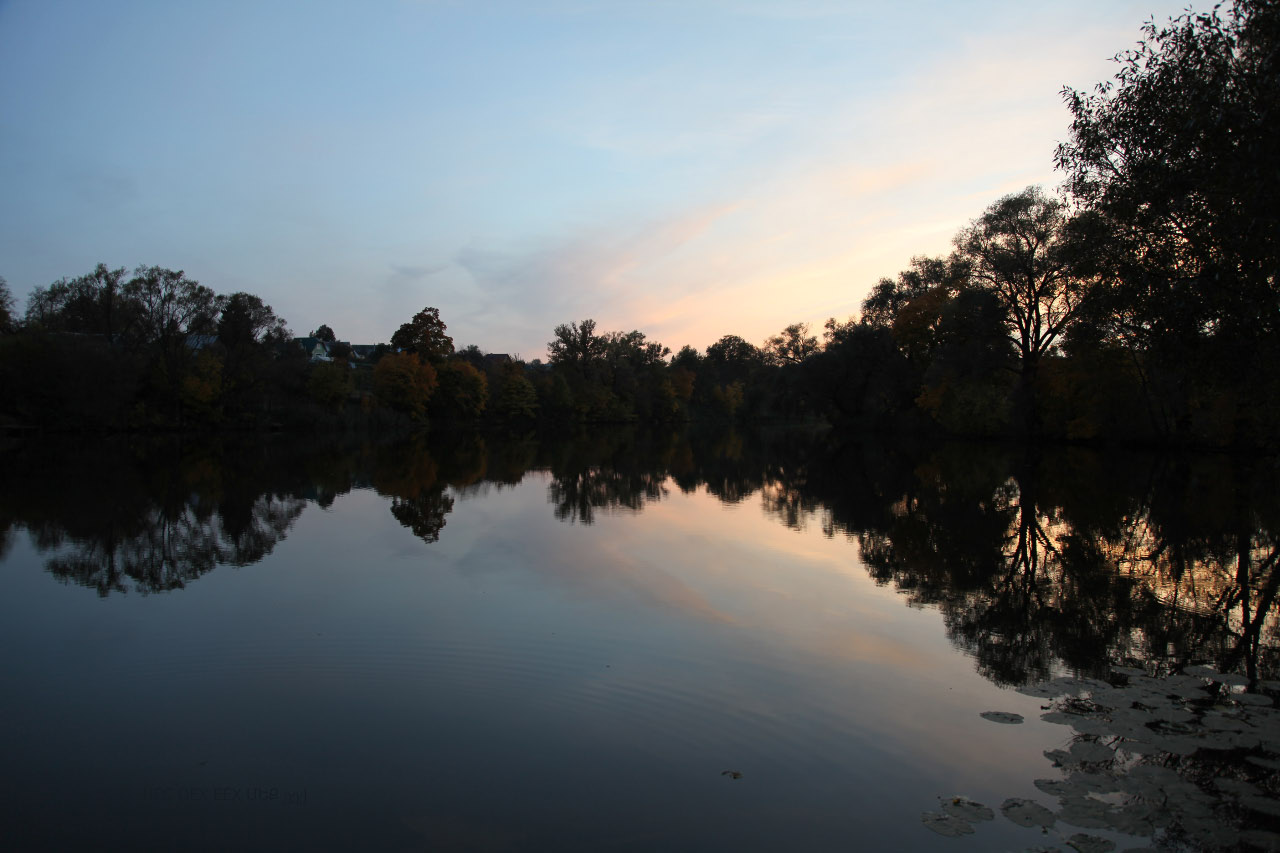 |
|
| |
Ясная Поляна – Yasnaya Polyana |
|
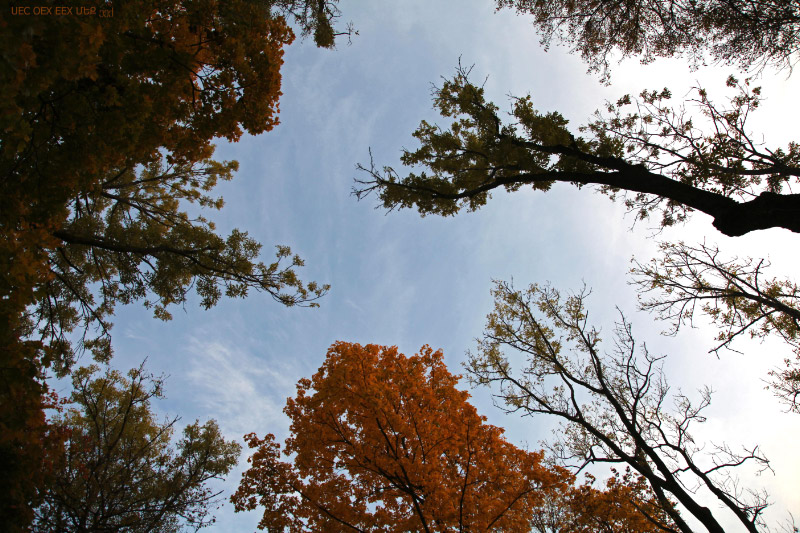
|
|
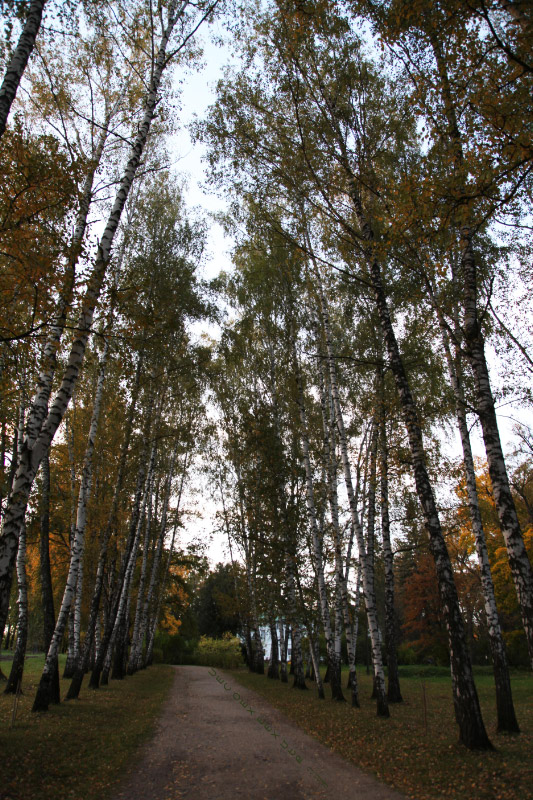 |
| |
|
|
|
|
| |
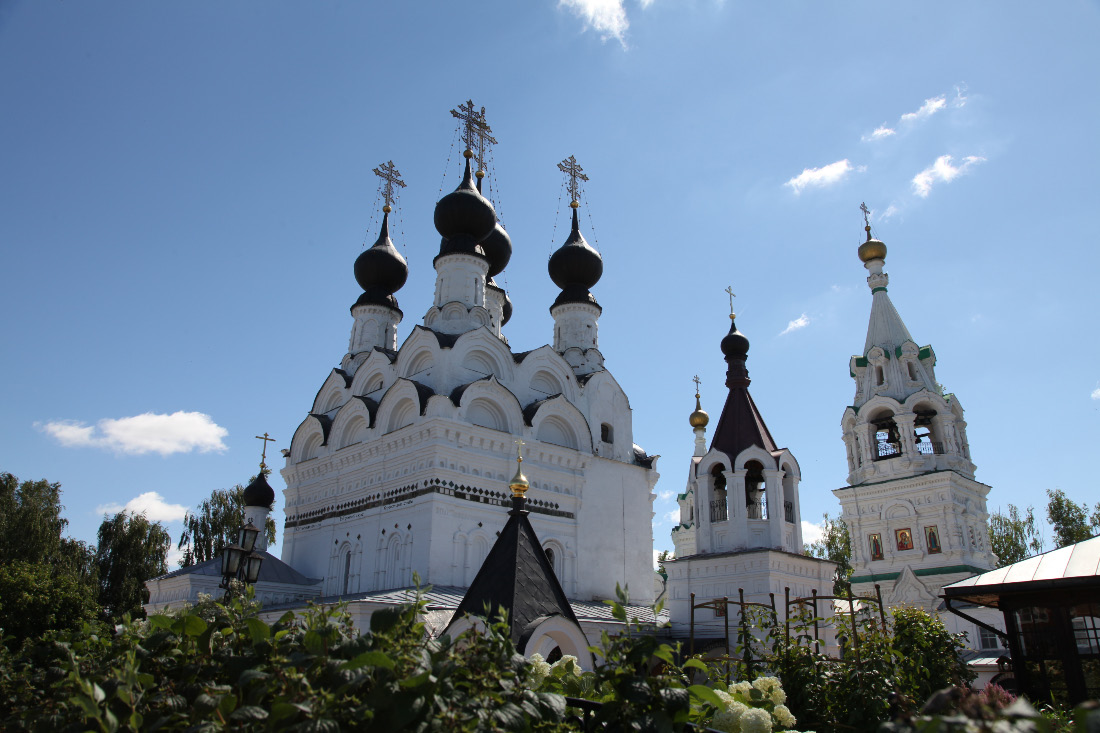 |
|
| |
XVII century Свято-Троицкий женский монастырь в Муроме – Holy Trinity Convent in Murom,
with Свято-Троицкий Собор – Holy Trinity Cathedral (1642-1643 гг.)
possibly on the site of a much older (XI - XIII century) wooden Church
dedicated to martyred Saints Roman (Boris) and David (Gleb), and
located immediately adjacent to the XVI century
Свято-Благовещенский мужской монастырь – Holy Annunciation Men's Monastery.
The Holy Trinity Cathedral is home to the much venerated relics of
Петр и Феврония Муромские – Piotr and Fevronia of Murom
Murom – Муром boasts a founding date of 862 Anno Dominii.
| Within a sea of Finno-Ugric peoples, including the Muromians, who give Murom her name, Murom – Муром marked the easternmost settlement of the East Slavs (proto-Russians). Students of Ukrainian-Russian history will at once recognize the year 862 as being the same year in which |
Рюрик – Rørik – Rurik
— the Varangian chieftain and founder of the eponymous Rurik Dynasty – Рюриковичі – Рюриковичи – Рурыкавічы —
began to rule in Novgorod, a rule which continued for most of a millennium, from 862 to 1598, and which came to encompass: |
| |
- Kievan Rus',
- the Grand Duchy of Moscow,
- the Tsardom of Russia,
|
|
| |
|
|
|